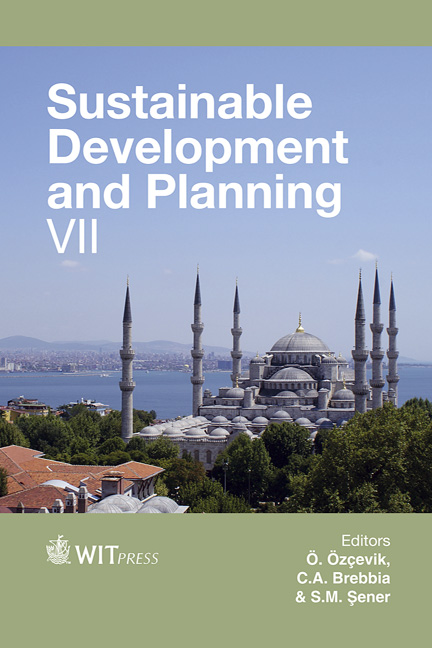Comparative Life Cycle Assessment Of Earth-block And Conventional Concrete-based Houses
Price
Free (open access)
Transaction
Volume
193
Pages
9
Page Range
309 - 317
Published
2015
Size
523 kb
Paper DOI
10.2495/SDP150261
Copyright
WIT Press
Author(s)
I. Papayianni, E. Anastasiou, K. Papadopoulou
Abstract
The old traditional earth-block methods of construction are currently reconsidered as a very environmentally friendly alternative to modern buildings due to the advantages they provide, such as the complete recycling of materials, low energy consumption during the manufacturing process and service life, as well as the comfort and health aspects of people living in them. The weak points of earth-block structures, such as low bearing capacity and low resistance to seismic vibrations and moisture have been overcome by upgrading building materials and their behaviour using modern technology. In this paper, a comparative Life Cycle Assessment is carried out in three scenarios for a rural house in terms of Global Warming Potential. The first scenario is a conventional type of modern house with a reinforced concrete skeleton and fired clay brick masonry, the second one also has a concrete skeleton, and its only difference with the first one is the use of compressed earth-blocks instead of fired bricks, and the third one consists of a wooden skeleton and earth blocks stabilized with fly ash, so that the compressive strength of the earth-block masonry can be increased. The energy efficiency of the three houses in comparison is estimated by the following existing legislation (Energy Performance of Building Directive, EPBD) concerning the adequacy of thermal insulation of each house expressed by the final Umax factor (W/cm2 °C). In each case, the final diagrams of the CO2 eq. emissions for each scenario are given after the holistic evaluation of their environmental footprint.
Keywords
earth-block house, concrete-based house, Life Cycle Assessment





